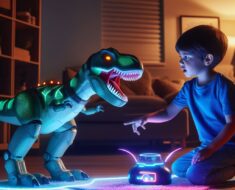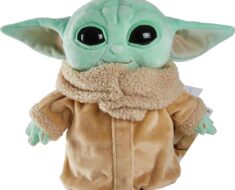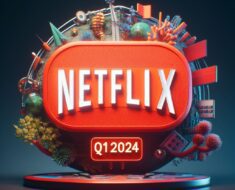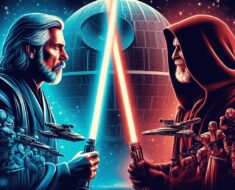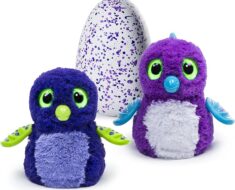My Little Pony is a toy line and media franchise that has enchanted generations of children and adults with its colorful characters, whimsical stories, and positive messages. From its humble beginnings as a plastic figurine in 1981 to its global phenomenon status in 2021, My Little Pony has evolved and reinvented itself several times, always staying true to its core theme of friendship and harmony. This is the story of how My Little Pony came to be, how it captured the hearts of millions of fans, and how it continues to inspire and entertain today and beyond.
The First Generation: My Pretty Pony and My Little Pony (1981-1995)
The origins of My Little Pony can be traced back to 1981, when Hasbro, an American toy company, introduced My Pretty Pony, a ten-inch-tall hard plastic figurine that could wiggle its ears, swish its tail, and wink one eye. The toy was created by illustrator Bonnie Zacherle and sculptor Charles Muenchinger, who wanted to make a realistic and expressive horse toy for girls. My Pretty Pony was followed by My Pretty Pony and Beautiful Baby, which came with a smaller “baby” pony figure. This was followed by pink and yellow versions of the original that had a unique symbol on their backsides, which would later be known as “cutie marks”.
In 1982, Hasbro decided to introduce six smaller and more colorful versions of the toy, sold under the title My Little Pony. The first six ponies were Blue Belle, Butterscotch, Cotton Candy, Minty, Snuzzle, and Blossom, and they featured brushable manes and tails, poseable heads, and different poses and expressions. The toy line became popular during the 1980s, and Hasbro expanded it with more ponies, accessories, playsets, and media. Some of the notable additions were the Earth ponies, the unicorns, the pegasi, the Sea Ponies, the Flutter Ponies, the Twinkle-Eyed Ponies, the Princess Ponies, and the Big Brother Ponies.
My Little Pony also ventured into animation, with two animated specials in 1984 and 1985, an animated feature-length film in 1986, and two animated television series from 1986 to 1987 and from 1992 to 1995. The animation was produced by various studios, such as Sunbow Productions, Marvel Productions, Toei Animation, and AKOM, and featured the voices of celebrities like Danny DeVito, Madeline Kahn, Cloris Leachman, Rhea Perlman, and Tony Randall. The animation introduced new characters and villains, such as Spike the dragon, the Smooze, Tirek, Grogar, and the Flutter Ponies, and explored the magical world of Equestria, where the ponies lived and had adventures.
The first generation of My Little Pony was a huge success, selling over 150 million ponies in the 1980s. The toy line and the media appealed to young girls, who enjoyed the variety, the fantasy, the cuteness, and the collectibility of the ponies. The toy line also had a loyal fan base of adult collectors, who appreciated the quality, the nostalgia, and the rarity of some of the ponies.
However, by the early 1990s, the popularity of My Little Pony declined, due to increased competition from other toy lines, such as Barbie, Polly Pocket, and Littlest Pet Shop. Hasbro decided to discontinue the toy line in 1992 in the United States and in 1995 globally, ending the first generation of My Little Pony.
The Second Generation: My Little Pony Tales (1997-1999)
In 1997, Hasbro attempted to revive the toy line with a new look and a new name: My Little Pony Tales. The second generation of My Little Pony featured smaller and slimmer ponies, with longer legs, larger eyes, and more realistic proportions. The toy line also focused more on accessories, such as clothes, shoes, jewelry, and hair clips, and less on cutie marks, which were reduced to small stickers.
The second generation of My Little Pony also had a new animated television series, produced by Sunbow Productions and Graz Entertainment, and aired on the Disney Channel in 1992. The series followed the lives of seven teenage ponies, who attended school, had crushes, went on adventures, and learned about friendship. The series had a more contemporary and urban setting, with the ponies living in a town called Ponyland, and using modern technology, such as phones, computers, and cars.
The second generation of My Little Pony was not very successful, and was discontinued in 1999. The toy line and the media did not appeal to the target audience of young girls, who found the ponies too bland, too girly, and too humanized. The toy line and the media also alienated the fan base of adult collectors, who preferred the original look, the fantasy, and the magic of the first generation.

The Third Generation: My Little Pony (2003-2010)
In 2003, Hasbro launched the third generation of My Little Pony, which returned to the original name and the original concept of the toy line. The third generation of My Little Pony featured ponies that resembled the first generation, with colorful bodies, brushable manes and tails, poseable heads, and cutie marks. The toy line also introduced new types of ponies, such as the Breezies, the Pegasus Ponies, the Unicorn Ponies, and the Alicorn Ponies.
The third generation of My Little Pony also had several direct-to-video animated films and specials, produced by SD Entertainment and WEP, and released from 2003 to 2009. The animation followed the adventures of the Core 7 ponies, who lived in Ponyville, a peaceful and magical town in Equestria. The animation had a more whimsical and musical tone, with the ponies singing, dancing, and celebrating various occasions, such as birthdays, holidays, and festivals.
The third generation of My Little Pony was more popular than the second generation, and sold approximately 100 million pony toys globally by 2010. The toy line and the media appealed to young girls, who enjoyed the cuteness, the variety, the fantasy, and the positivity of the ponies. The toy line and the media also attracted some adult collectors, who appreciated the nostalgia, the quality, and the diversity of the ponies.
However, by the late 2000s, the popularity of My Little Pony started to wane, due to the repetition, the saturation, and the lack of innovation of the toy line and the media. Hasbro decided to end the third generation of My Little Pony in 2010, and prepare for a new generation that would revitalize the franchise.
The Fourth Generation: My Little Pony: Friendship Is Magic (2010-2019)
In 2010, Hasbro launched the fourth generation of My Little Pony, which marked a major change and a major success for the franchise. The fourth generation of My Little Pony featured a new look, a new story, and a new audience for the toy line and the media.
The fourth generation of My Little Pony was spearheaded by Lauren Faust, an animator and a writer who had worked on shows such as The Powerpuff Girls and Foster’s Home for Imaginary Friends. Faust was a fan of the first generation of My Little Pony, and wanted to create a show that would appeal to both children and adults, and that would challenge the stereotypes and the expectations of the genre. Faust developed the concept, the characters, and the world of the show, and pitched it to Hasbro, who agreed to produce it.
The show was titled My Little Pony: Friendship Is Magic, and it premiered on October 10, 2010, on The Hub, a cable channel co-owned by Hasbro and Discovery Communications. The show followed the adventures of Twilight Sparkle, a unicorn pony who was sent by Princess Celestia, the ruler of Equestria, to the town of Ponyville, to learn about the magic of friendship. There, she met and befriended five other ponies: Rainbow Dash, a pegasus pony who loved to fly and perform stunts; Pinkie Pie, an earth pony who loved to party and make others laugh; Rarity, a unicorn pony who loved to design and wear fashionable clothes; Applejack, an earth pony who worked on her family’s apple farm; and Fluttershy, a pegasus pony who loved to take care of animals. Together, they formed the Mane Six, and they faced various challenges and enemies, such as Nightmare Moon, Discord, Queen Chrysalis, King Sombra, Tirek, Starlight Glimmer, and the Storm King, while learning valuable lessons about friendship, honesty, loyalty, generosity, kindness, laughter, and magic.
The show was animated by Studio B Productions (later DHX Media and Top Draw Animation), and featured the voices of Tara Strong, Ashleigh Ball, Andrea Libman, Tabitha St. Germain, and Cathy Weseluck, among others. The show had a distinctive and expressive style, with bright colors, fluid animation, and detailed backgrounds. The show also had a rich and expansive lore, with references to mythology, folklore, literature, pop culture, and history. The show had a humorous and heartwarming tone, with witty dialogue, clever jokes, catchy songs, and emotional moments.
The show was a huge hit, and became one of the most popular and acclaimed animated shows of the 2010s. The show received positive reviews from critics, who praised its writing, animation, voice acting, music, and messages. The show also received several awards and nominations, such as the Annie Awards, the Daytime Emmy Awards, the Leo Awards, the Peabody Awards, and the Television Critics Association Awards. The show also attracted a large and diverse fan base, which included not only young girls, but also boys, teenagers, and adults of both genders. The show spawned a subculture of fans, who called themselves “bronies” (a portmanteau of “bro” and “pony”) or “pegasisters” (a portmanteau of “pegasus” and “sister”), and who created and shared various fan works, such as art, music, videos, games, comics, and fan fiction. The show also inspired several fan conventions, documentaries, podcasts, and charities.
The show also boosted the sales of the toy line, which featured various products, such as plushies, figurines, playsets, books, comics, video games, and clothing. The toy line also introduced new characters and concepts, such as the Cutie Mark Crusaders, the Elements of Harmony, the Crystal Empire, the Wonderbolts, the Equestria Girls, and the Cutie Map. The toy line also had several spin-offs and variations, such as the Friendship is Magic Collection, the Guardians of Harmony, the Equestria Girls Minis, and the My Little Pony: The Movie line.
The show also spawned several other media, such as the My Little Pony: Equestria Girls film series, which featured the human versions of the ponies in a high school setting; the My Little Pony: Friendship Is Magic comic series, which expanded the stories and the lore of the show; the My Little Pony: The Movie theatrical film, which featured the ponies on a quest to save Equestria from a new threat; and the My Little Pony: Best Gift Ever, My Little Pony: Rainbow Roadtrip, and My Little Pony: Equestria Girls: Holidays Unwrapped specials, which featured the ponies celebrating various occasions.

The fourth generation of My Little Pony was a phenomenon, and became one of the most influential and profitable franchises of the 2010s. The toy line and the media appealed to a wide range of audiences, who enjoyed the creativity, the diversity, the quality, and the positivity of the ponies. The toy line and the media also created a strong and supportive community of fans, who celebrated and shared their love for the ponies.
The show ended on October 12, 2019, after nine seasons and 222 episodes, with a three-part finale that concluded the story of the Mane Six and their friends. The show also had a retrospective special, titled My Little Pony: Friendship Is Magic – A Decade of Pony, which featured the cast and crew reflecting on the show and its impact. The show was followed by a short-lived epilogue series, titled My Little Pony: Pony Life, which featured the chibi versions of the ponies in a slice-of-life comedy setting.
The fourth generation of My Little Pony was a milestone, and became one of the most beloved and respected franchises of the 2010s. The toy line and the media left a lasting legacy, and inspired and entertained millions of fans around the world.
The Fifth Generation: My Little Pony: A New Generation (2021-)
In 2021, Hasbro launched the fifth generation of My Little Pony, which marked a new beginning and a new challenge for the franchise. The fifth generation of My Little Pony featured a new look, a new story, and a new platform for the toy line and the media.
The fifth generation of My Little Pony was developed by Hasbro Studios and Boulder Media, and was based on the concept art by Imalou, a French artist and a fan of the franchise. The fifth generation of My Little Pony featured ponies that had a more realistic and detailed design, with fur, hooves, and eyelashes. The toy line also featured new types of ponies, such as the Earth Ponies, the Unicorn Ponies, the Pegasus Ponies, and the Winged Unicorns.
The fifth generation of My Little Pony also had a new animated film, titled My Little Pony: A New Generation, which premiered on Netflix on September 24, 2021. The film followed the adventures of Sunny Starscout, an earth pony who dreamed of restoring the magic and the friendship between the pony tribes, who had become separated and distrustful of each other. Along the way, she met and befriended four other ponies: Izzy Moonbow, a unicorn pony who was curious and optimistic; Pipp Petals, a pegasus pony who was a pop star and a princess; Zipp Storm, a pegasus pony who was a rebel and a flyer; and Hitch Trailblazer, an earth pony who was a sheriff and a friend. Together, they formed the Mane Five, and they faced various obstacles and enemies, such as Sprout Cloverleaf, a power-hungry earth pony; Phyllis Cloverleaf, a greedy and manipulative earth pony; and Alphabittle, a mysterious and sinister unicorn.
The film was followed by a new animated television series, titled My Little Pony: A New Generation, which continued the story of the Mane Five and their friends. The series premiered on Netflix on October 22, 2021, and featured the same animation style and voice cast as the film. The series explored the new world of Equestria, where the ponies lived and had adventures. The series had a more adventurous and dramatic tone, with the ponies discovering new places, meeting new characters, and uncovering new secrets.

The fifth generation of My Little Pony was a gamble, and became one of the most anticipated and controversial franchises of the 2020s. The toy line and the media appealed to some audiences, who enjoyed the novelty, the diversity, the quality, and the positivity of the ponies. The toy line and the media also attracted some new fans, who were intrigued by the premise, the characters, and the world of the ponies.
However, the fifth generation of My Little Pony also faced some challenges and criticisms, such as the competition from other streaming platforms, such as Disney+, HBO Max, and Peacock; the comparison and the contrast with the previous generation, which had a loyal and vocal fan base; and the reception and the feedback from the critics and the fans, who had different opinions and expectations of the ponies.
The fifth generation of My Little Pony was an experiment, and became one of the most divisive and debated franchises of the 2020s. The toy line and the media had a potential, and hoped to inspire and entertain millions of fans around the world.
The Future of My Little Pony
My Little Pony is a toy line and media franchise that has been around for over 40 years, and that has gone through several changes and transformations. My Little Pony has been a part of the childhood and the culture of many generations of children and adults, who have enjoyed and cherished the ponies and their stories. My Little Pony has also been a source of creativity and community for many fans, who have created and shared their own works and experiences with the ponies and their friends.
My Little Pony is a phenomenon, and a legacy, that shows no signs of stopping or fading away. My Little Pony is a franchise that will continue to evolve and reinvent itself, to adapt and appeal to the changing times and tastes of the audiences and the fans. My Little Pony is a franchise that will continue to create and deliver new and exciting products and media, to surprise and delight the fans and the critics. My Little Pony is a franchise that will continue to celebrate and promote its core theme of friendship and harmony, to inspire and empower the fans and the world.
My Little Pony is a franchise that has a past, a present, and a future. My Little Pony is a franchise that has a magic, a magic of friendship, that will never end.


